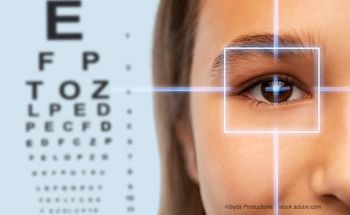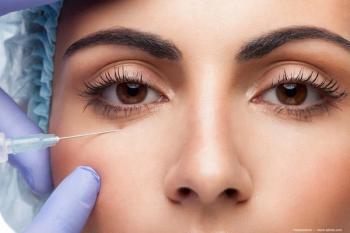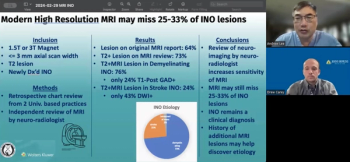
Impact of MGD treatment on keratometry
Failure to address problems with the tear film and ocular surface before surgery can negatively affect surgical outcomes and patient satisfaction.
Editor’s Note: Welcome to “
The tear film provides two-thirds of the refractive power of the eye. Failure to address problems with the tear film and ocular surface before surgery can negatively affect surgical outcomes and patient satisfaction.
Many cataract surgeons advise patients to use artificial tears before and after surgery. While tears do provide a transient benefit, long-term stabilization and optimization of the tear film requires more than just tears. In particular, it is important to assess whether the patient has meibomian gland disease (MGD).
If the meibomian glands are clogged and inspissated, and if the meibum is not flowing freely, it is very important to unblock the glands before cataract surgery. This is best accomplished by heating and mechanically evacuating the glands with thermal pulsation system (TPS) treatment (LipiFlow, Johnson & Johnson). I like to concomitantly put MGD patients on oral re-esterified triglyceride omega-3 supplements, as well. If there is inflammation, there is a role for a lifitegrast or cyclosporine, sometimes in conjunction with a short course of a faster-acting steroid.
I conducted a pilot study to determine whether TPS treatment before cataract surgery affects keratometry and surgical decision making. Keratometry was measured with the OPD-Scan III (Nidek) at baseline and 6 weeks after TPS in 25 eyes of 23 subjects undergoing cataract surgery.
There were statistically significant changes in delta K (the difference between flat and steep Ks) and axis of astigmatism. The mean axis change was 22.5 ± 23.9°. The direction of the axis change varied considerably, with about half the axes changing from steep to flat and the others, the reverse. The mean delta K was 0.31 ± 0.20°. It also varied, with an increase in delta K in 16 eyes and a decrease in 8 eyes. Final refractive outcomes demonstrated that 60% of eyes were precisely on target; 88% were within 0.25 D of the intended refraction and 92% were within 0.5 D.
What I found most interesting about these results were how my planned intervention changed based on the measurements pre- and post-TPS treatment (Fig 1). In 40% of the eyes, the treatment made a difference in my surgical plan. In some cases, that meant performing a limbal relaxing incision or no astigmatic correction instead of a toric IOL. In 28% of the eyes, my plan changed from no astigmatism management needed prior to TPS treatment to planning for a toric IOL or LRI. Ocular surface irregularities from the unstable tear film were masking the true astigmatism.
This demonstrates that ignoring the MGD before surgery could come at a significant cost to the practice-not only the lost revenue from not using the premium technology my patients would have chosen to achieve their goal of greater spectacle independence, but also the cost of possibly performing enhancements after surgery and of the additional chair time to counsel unhappy patients.
Newsletter
Don’t miss out—get Ophthalmology Times updates on the latest clinical advancements and expert interviews, straight to your inbox.


















































.png)


